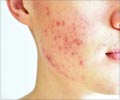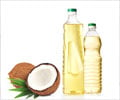A new acne treatment now – nano bombs filled with lauric acid, a bioengineering graduate student from the UC San Diego Jacobs School of Engineering, has shown.
A new acne treatment now – nano bombs filled with lauric acid, a US bioengineering graduate student has shown. The acid is found in coconut oil and also in human breast milk.
The student from from the UC San Diego Jacobs School of Engineering developed a "smart delivery system" capable of delivering lauric-acid-filled nano-scale bombs directly to skin-dwelling bacteria (Propionibacterium acnes) that cause common acne. The findings have been published in the journal ACS Nanoin March.On Thursday April 15, bioengineering graduate student Dissaya "Nu" Pornpattananangkul presented her most recent work on this experimental acne-drug-delivery system at Research Expo, the annual research conference of the UC San Diego Jacobs School of Engineering.
Common acne, also known as "acne vulgaris," afflicts more than 85 percent of teenagers and over 40 million people in the United States; and current treatments have undesirable side effects including redness and burning. Lauric-acid-based treatments could avoid these side effects, the UC San Diego researchers say.
"It's a good feeling to know that I have a chance to develop a drug that could help people with acne," said Pornpattananangkul, who performs this research in the Nanomaterials and Nanomedicine Laboratory of UC San Diego NanoEngineering professor Liangfang Zhang from the Jacobs School of Engineering.
The new smart delivery system includes gold nanoparticles attached to surfaces of lauric-acid-filled nano-bombs. The gold nanoparticles keep the nano-bombs (liposomes) from fusing together. The gold nanoparticles also help the liposomes locate acne-causing bacteria based on the skin microenvironment, including pH.
Once the nano-bombs reach the bacterial membranes, the acidic microenvironment causes the gold nanoparticles to drop off. This frees the liposomes carrying lauric acid payloads to fuse with bacterial membranes and kill the Propionibacterium acnes bacteria.
Advertisement
Zhang noted that nano-scale topical drug delivery systems face a different set of challenges than systems that use nanotechnology to deliver drugs systematically to people.
Advertisement
Pornpattananangkul, who is originally from Thailand, said that it's just a coincidence that her research involves a natural product produced by coconuts, a staple of Thai cuisine.
From a new solar concentrator design to balancing robots, experimental acne drugs, and wireless heart and brain sensors, UC San Diego graduate engineering students are developing next generation technologies and therapies to address the environmental, health and computing needs of society. These students presented their cutting edge projects at the 29th Annual Jacobs School of Engineering Research Expo on April 15. The theme of this year's Expo is Renewables and America's Energy Future.
Source-Medindia
GPL









